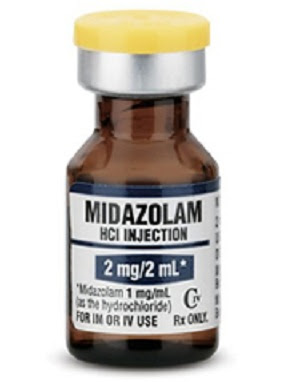The most commonly used benzodiazepines in EMS/EM (Emergency Medical Services/Emergency Medicine) are diazepam (Valium), lorazepam (Ativan), and midazolam (Versed). It should be relatively easy to look at the best research and determine –
1. Should benzodiazepines be the first parenteral medication given for seizures?
2. Should benzodiazepines be the first parenteral medication given for agitated delirium/excited delirium (it is a real condition that results in death in custody much more often than intentional police misbehavior)?
3. Should benzodiazepines be the first parenteral medication given for sedation?
In EMS/EM, some of the important things to consider are the time it takes for the drug to take effect, the likelihood that the drug will produce the desired effect, the seriousness of adverse effects and rate at which the most serious adverse effects occur.
Seizures
Is there any evidence that anything works quicker than IM (IntraMuscular) midazolam, when the patient does not already have an IV (IntraVenous line)?
Is there any evidence that an initial dose of 10 mg IM midazolam is too high of an initial dose for an adult (over 40 kg) or that 5 mg is too high of an initial dose for a child (40 kg or less)?
Is there any evidence that this dosing increases the rate of airway compromise above what would occur with lower doses?
The Rampart study[1] strongly suggests that 10 mg of IM midazolam is the best approach for the seizing patient who does not already have an IV, when IM midazolam is available. If midazolam is not available, such as due to poorly written protocols, midazolam is not an option and delaying less effective care to wait for the ideal treatment would be reckless.
There do not appear to be any studies that show any better outcomes with any other benzodiazepoines or with any other doses.
What about when an IV is already in place?
Should IV midazolam be used?
Should IV lorazepam be used?
Should IV diazepam be used?
Should some other drug be used?
The evidence is not clear, but is there any reason to believe that lorazepam, or diazepam, works as quickly as midazolam, when given intravenously?
Is there any reason to believe that lorazepam, or diazepam, produce fewer, or less serious, adverse effects than midazolam, when given IV?
I don’t know of any valid evidence to suggest that midazolam is inferior to either diazepam or lorazepam.
There is also the benefit in EMS of a much shorter time of effect for midazolam.
A drug that wears off quickly is going to be the safer EMS drug – unless there is a good reason to use a drug that lasts longer.
I will explain why wearing off quickly is important in EMS treatment of seizures in Part II (not yet posted).
–
Footnotes:
–
[1] Intramuscular versus intravenous therapy for prehospital status epilepticus.
Silbergleit R, Durkalski V, Lowenstein D, Conwit R, Pancioli A, Palesch Y, Barsan W; NETT Investigators.
N Engl J Med. 2012 Feb 16;366(7):591-600.
PMID: 22335736 [PubMed – in process]
Free Full Text from N Engl J Med.
I have written about this in Intramuscular Midazolam for Seizures – Part I,
Part II,
Part III,
Part IV,
Part V,
Part VI,
Misrepresenting Current Topics in EMS Research from EMS Expo – RAMPART,
and Images from Gathering of Eagles Presentation on RAMPART.
.



So, at the risk of jumping ahead, I’ll skip number one because I think that’s a fine usage for versed. Numbers 2 and 3, I’d propose we dispense with this, in my opinion, insane idea of using benzodiazepines and opioids for sedation, and replace it fully with ketamine and appropriate physical restraints and as necessary law enforcement assistance to handle these individuals. The risks are much lower and you can still get what you want out of it.
Why are we not using untranslatable Versed. It’s easier less invasive and works great. Same dosing as IV and it is faster acting than IM